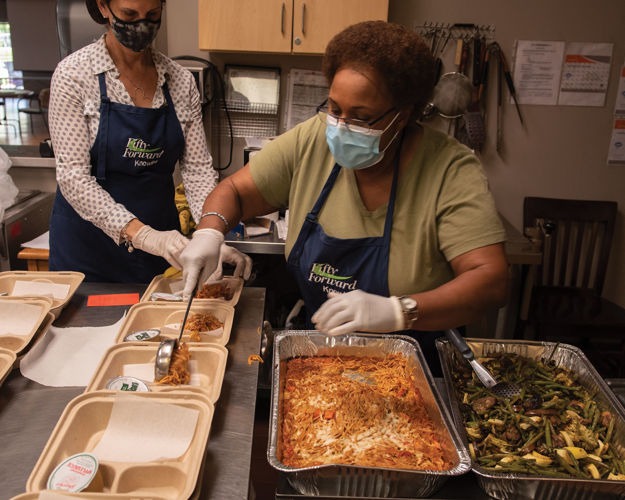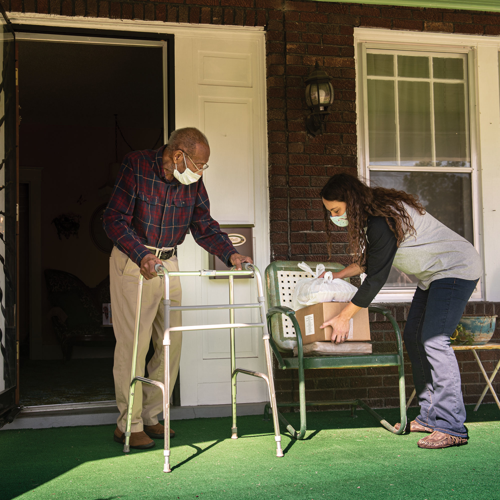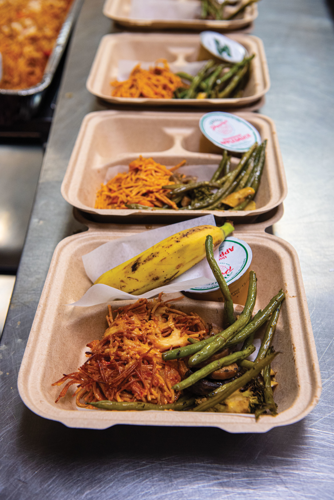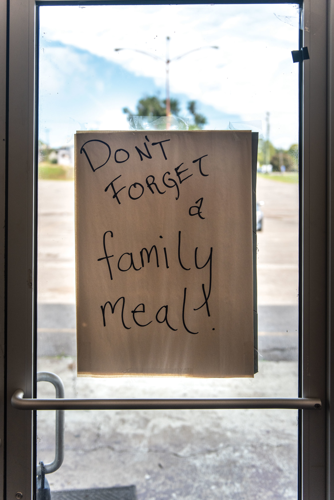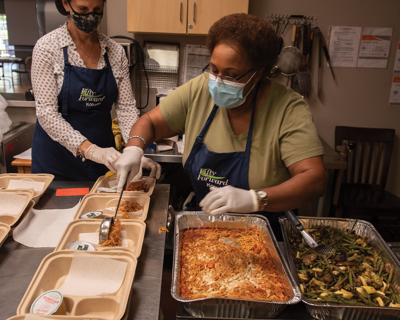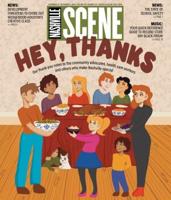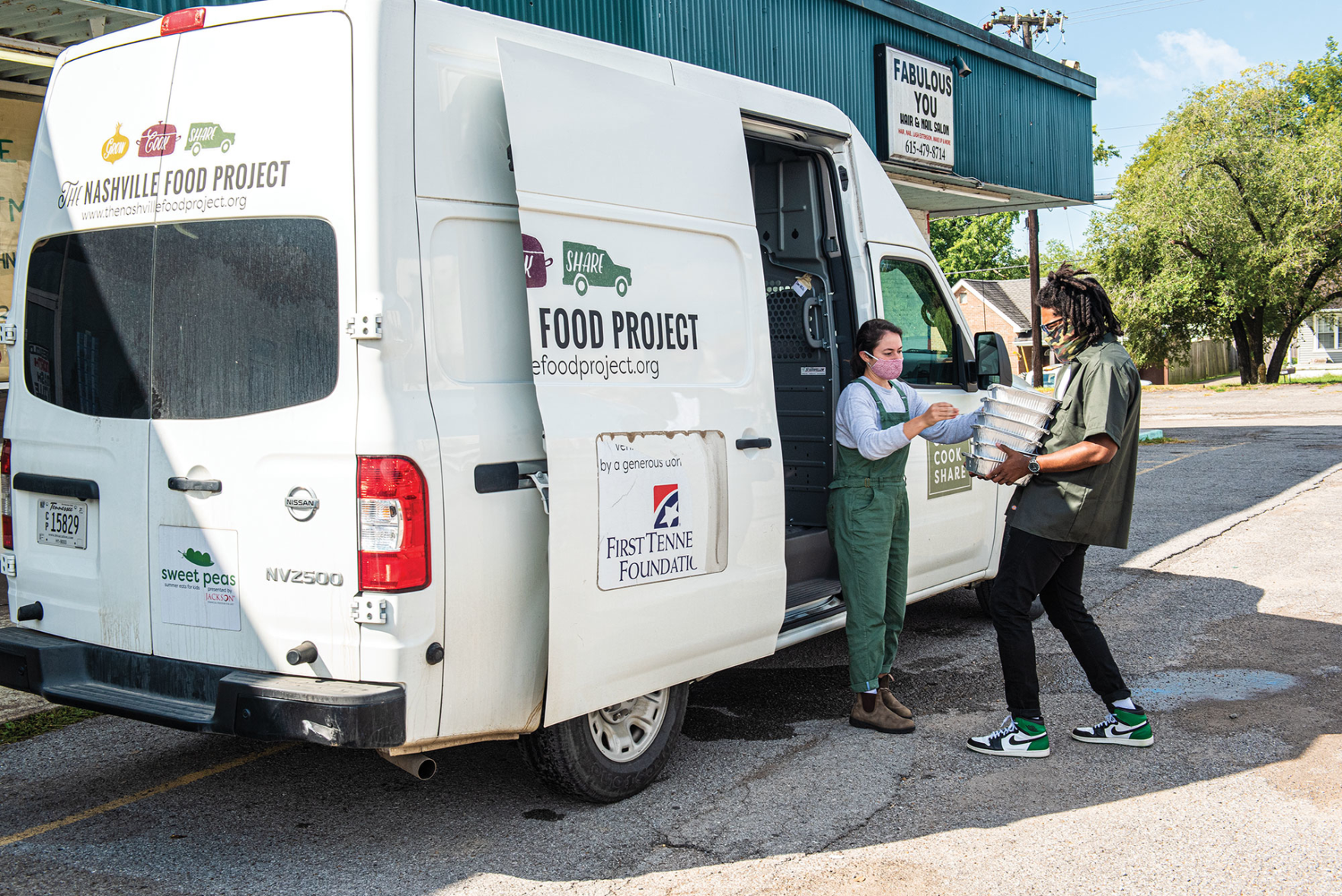
The Nashville Food Project delivering meals to Gideon’s Army
A couple of weeks ago on the Hip Donelson Facebook page, a group member posted a photo of a box of vegetables that had mysteriously materialized on his doorstep. Was this some kind of early reverse-Halloween treat? A trick? Where did it come from, he wondered. Is it safe? Should he eat it?
About 70 comments later, the group deduced it was probably OK to eat. A couple of commenters explained that the boxes, labeled with a USDA sticker, were probably like the ones being distributed at nearby schools. This box must have been leftover, because there tended to be excess — and maybe some were even thrown away.
The USDA Farmers to Families program claims to distribute millions of this type of miscellaneous food box. Ivanka Trump mentioned them in her RNC speech. The program, which is slated to ultimately spend $4 billion, pays food distributors to box up produce, dairy and meat, and ship to agencies that hand them out. Just last week, Politico reported that the boxes, paid for with taxpayer money, are now being sent out with a letter from President Trump taking credit for the effort — an election-season move called “egregious” by one Ohio food bank director.
The boxes have likely kept some folks who needed them fed. But they also show how food can move in convoluted ways. The vegetables in Donelson, for example, had been shipped from Forestwood Farm Inc., a produce-delivery company out of Alabama — despite the fact that we have farms all around us here in Tennessee. Is it the smartest use of funds to have vegetables criss-crossing state lines, losing freshness, with the assumption they will fill needs but then potentially go to waste?
Even during the pandemic, we live in a country of abundance — according to the USDA, 30 to 40 percent of food goes to waste. The breakdown often happens in logistics and access, compounded by factors like transportation, housing and systemic racism. As we’ve seen time and again in all sorts of industries since March, this pandemic did not break our food system, but it exposed how badly it was already broken.
I work at The Nashville Food Project, and we too have received USDA produce boxes. We did not apply for them, and we were not the intended recipient. They came to us as a last stop before the landfill — excess that had been passed along. We gratefully accepted them and chopped the produce to use in some of the roughly 4,000 scratch-made meals that leave our kitchen each week. It’s the type of thing we do every day: pulling together food we grow on a production farm along with about 2,000 pounds of donated food we recover each week from various sources — grocers, farms, restaurants and markets.
All this to say, food-security work can be convoluted, slow, frustrating and time-consuming. On the other hand, it can also be collaborative, community-driven and productive when folks work together, share resources, consider the smartest and most effective routes for food, and truly listen to the needs of the community rather than making assumptions.
At a time when the pandemic has made many people less food secure — and with more people wanting to get involved to help — we’ve collected a few insights from folks on the ground. Below are three things to know about local food security.

FiftyForward’s meal delivery
The stats and stakes.
Food insecurity is a state of being without reliable access to a sufficient amount of affordable, nutritious food. According to data collected by NPR from a USDA report, more than 35 million Americans experienced food insecurity in 2019. Estimates by researchers at Northwestern University indicate that that number has more than doubled as a result of the pandemic — nearly one in four households — and tripled among households with children. Black and Hispanic Americans are especially and disproportionately affected.
Keep it local by getting to know the landscape. There are lots of ways to plug in — from well-established to newer initiatives.

FiftyForward’s meal delivery
Many local organizations have been working to alleviate hunger for years pre-pandemic — Second Harvest Food Bank of Middle Tennessee, Martha O’Bryan Center, St. Luke’s Community House, Community Care Fellowship, The Nashville Food Project and more. Additional community organizations also have pivoted to address food insecurity in their programming for the first time.
One recent example: Legacy Mission Village, an organization started by refugees for refugees, previously focused on education for families. After the pandemic came along, Legacy Mission Village heard an immediate need for food and shifted their efforts.
Meanwhile, organizations that pair food access with additional services have stepped up their work around food security due to the increased need. “Since the pandemic, we’ve kicked it up a notch,” says Sharie Loik Goodman with FiftyForward, an organization that provides programming for Nashvillians 50 and older. “We’ve found people popping up that had never gone through this.”
At Second Harvest, director of community engagement Courtney Blaise says the food bank shared about 600,000 pounds a week pre-pandemic. Now it’s more than 1 million pounds a week.
As schools also work in creative ways to provide crucial meals to students, additional organizations fill the gaps with after-school programming around meals. Those include Turnip Green Creative Reuse, Nations Ministry for refugee families and Preston Taylor Ministries, which serves teens.
The national organization World Central Kitchen also has a local presence here, at least through the end of the year. WCK’s Chefs for America received recent Tennessee Community CARES funding to resume its programming — paying restaurants to make meals for the community. WCK has partnered with the Mesa Komal Commercial Kitchen at Conexión Américas to pay immigrant chefs for meals that will be shared through Conexión Américas’ networks.
“We are able to use their in-house program,” says World Central Kitchen’s Nashville project lead Whitney Pastorek. “And also use their networks to find people who need the food.”

Gideon’s Army’s free store
Free stores have also been popping up. While The Store (a free store from Brad Paisley and Kimberly Williams-Paisley) existed pre-pandemic, Gideon’s Army also opened a free store recently. Families can leave with a family-sized meal from The Nashville Food Project. Drkmttr runs out of The Nashville Free Store as well as a free community fridge, while Nashville Community Fridge has a location at North Nashville’s Elephant Gallery.
Best practices involve listening to the community first — not assuming the type of need.
When Legacy Mission Village shifted its programming to address food insecurity, organizers were listening to the needs of their community — and then they took it a step further. They recognized that some of the foods for refugee families weren’t being consumed because they didn’t make sense culturally. They asked meal partners to consider this in their planning. They also forged a partnership with the farmers of The Nashville Food Project’s Growing Together program. Burmese farmers accepted emergency funding to grow and share vegetables within their own community — a group also hit hard by COVID-19.

Gideon's Army's free store
“We need to actually listen,” says Grace Biggs, director of food access at The Nashville Food Project, “and trust in putting resources into the hands of people being impacted.”
Biggs says The Nashville Food Project’s approach is to align with poverty-disrupting work — food as a benefit that comes alongside a job training program or after-school program. “It’s always the case with food that it points to a lot of deeper issues. It requires a collaborative sustained solution that’s more than just getting food.”
Blaise, Goodman and Pastorek all mention the need for community collaboration too. Goodman works with a variety of groups to provide for her clients — pantry goods from Second Harvest and The Store like easy-to-open chili or oatmeal as well as prepared meals from The Nashville Food Project.
“It’s a personable thing,” says Goodman. “When you’re eldery you can’t eat just any food given to you. Sometimes we’ve gone in and they would have groceries but couldn’t fix them. They can’t stand at the stove and cook rice or pour the hot water out.”
These organizations also have been focusing on how to destigmatize the need for help — especially at a time when folks might be facing food shortages for the first time.
“I don’t see it as charity,” Goodman says. “This is your community.”

